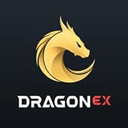
Review on Hedera Hashgraph by gregori cordova

A novel and very powerful alternative to the blockchain that we currently know
The fact that thousands of cryptocurrencies have been created in recent years implies that each one of them seeks to compete in being the best and minimizing persistent problems for its better functioning and adaptation. To achieve this, it is necessary to implement innovative technologies that provide efficiency and scalability to the ecosystem, which is why Hedera Hashgraph was born, a decentralized and open source database that aims to compete with the blockchain that we currently know, solving a series of common deficiencies and providing greater performance. hedera, uses an original protocol called Gossio, which is characterized by being more secure, fast and fair. the security of the system relies on a Byzantine fault tolerant asynchronous system in which if any of the nodes connected to the network were to stop working, the system could continue to function normally. In addition, the system is absolutely fair and democratic when it comes to processing transactions, since unlike bitcoin, where miners prioritize the highest value transactions to obtain rewards, with Hedera, all transactions are processed in order. All this is possible thanks to its novel Hashgraph protocol, which minimizes the consumption of bandwidth and energy and it is also thanks to a consensus system called votelles voting in which a virtual vote is carried out without the need to talk to anyone and creating a perfect consensus mathematically speaking, which makes it more practical than the consensuses of other blockchains such as Pos and Pow. The platform has its own token called HBAR that has several use cases, but it is mainly used for the governance of the entire system and its security.
Creating different alternatives to the current blockchain is a challenge, but Hedera has shown that important technological advances can be achieved with a view to the absolute decentralization of this new financial system that is just beginning, also guaranteeing a much higher level of security and performance than the one we are used to
Pros
- Hedera is governed by companies of great prestige worldwide such as Lg, Boeing, Google or IBM, where all have voting power
- It represents one of the most notable innovations in the cryptographic industry in recent times that seeks to democratize the internet and make the applications created under its structure more fair and efficient.
- With Hedera more than 10,000 transactions can be processed per second and their confirmation is just 3 seconds
- The cost for each transaction using the Hedera network is only $ 0.0001
- Hedera is also an ideal platform for developers to deploy highly efficient smart contracts and decentralized applications by providing them with Apis for many use cases.
Cons
- The fact that it is a distributed book governed by technological powers such as Google or IBM, has led to a certain distrust in the audience that believes that it is not a totally decentralized project.











